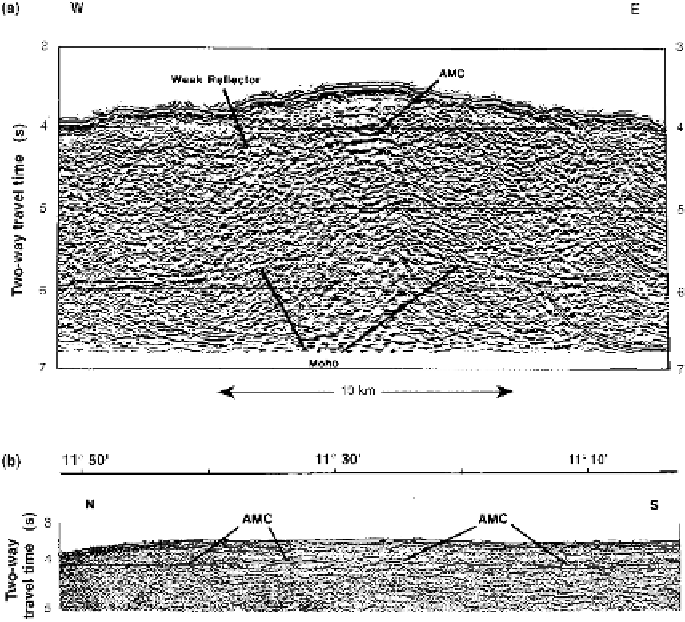Geoscience Reference
In-Depth Information
Figure 9.26.
(a) A migrated CDP reflection record section across the axis of the East
Pacific Rise at 9
◦
30'N. The first reflector at 3.5-3.9 s is the seabed reflection (water
depth 2.6-2.9 km). The large-amplitude event beneath the ridge axis is interpreted as
the reflection from the lid of an axial magma chamber (AMC). Its extension as a very
weak reflector out onto the flanks of the ridge could perhaps represent the top of a
frozen chamber or the change from extrusives to dykes and gabbros. Reflections
arriving at the correct time for Moho reflections extend to within 2-3 km of the ridge
axis. (b) A CDP reflection record section along 100 km of the axis of the East Pacific
Rise (11-12
◦
N). The AMC can be traced as a continuous event for tens of kilometres.
The AMC reflection was not recorded north of 11
◦
50'N. See also Fig. 9.35(b). (From
Detrick
et al
.(1987).)
shadow zone for crustal arrivals beyond 11 km range, indicating the presence of
acrustal low-velocity zone. The profile shot 1.5 km off the ridge axis (ESP 11)
shows some evidence for a thin low-velocity zone (note the discontinuity in first
arrivals between 8 and 10 km). The profile 3.6 km away from the axis (ESP 13)
shows no evidence for a low-velocity zone and has a typical oceanic velocity
structure. Thus, at 13
◦
N the low-velocity zone has a total width less than 5 km.
The event at 6 s two-way time (Fig. 9.26(a)) is interpreted as being a reflection
from the Moho. This reflection can be traced to within 2-3 km of the ridge
axis, which again limits the maximum width of the magma chamber to about

